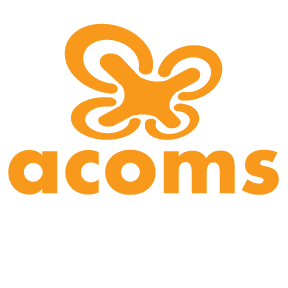The Benefits of Using Drones for Topographical Surveys
In recent years, drones have revolutionized the field of topographical surveying, offering numerous advantages over traditional land-based methods. As such, the use of Unmanned Aerial Vehicles (UAVs) for topographical mapping provides enhanced efficiency, accuracy, and cost-effectiveness. This post explores the key benefits of drone-based topographical surveys and their impact on construction, agriculture, and environmental management industries.
1. Increased Efficiency and Speed
Traditional land surveying can be time-consuming and labor-intensive, often requiring weeks or even months to complete large-scale surveys. Drones, on the other hand, can cover extensive areas in a fraction of the time. By leveraging aerial imaging and LiDAR (Light Detection and Ranging) technology, drones collect vast amounts of data quickly, reducing project timelines significantly (Turner et al., 2020).
2. High Accuracy and Precision
Modern drones equipped with high-resolution cameras and GPS technology provide highly accurate topographical data. Photogrammetry software processes aerial images to generate precise 3D models and digital elevation models (DEMs) with centimeter-level accuracy (Colomina & Molina, 2014). Compared to conventional methods, drone surveys minimize human error and improve the reliability of geospatial data.
3. Cost-Effectiveness
Traditional surveying methods often involve high labor costs, specialized equipment, and extended fieldwork. In contrast, drone-based surveys require fewer personnel and lower operational expenses. The ability to quickly and repeatedly capture aerial data reduces overall project costs while maintaining high-quality results (Nex & Remondino, 2013).
4. Enhanced Safety
Surveying hazardous or inaccessible terrain poses significant risks to human surveyors. Drones eliminate the need for field personnel to navigate dangerous environments, such as steep slopes, unstable ground, or heavily forested areas. By conducting remote data collection, drones enhance worker safety and minimize on-site accidents (Blistan et al., 2020).
5. Environmental and Agricultural Applications
Drones play a crucial role in environmental monitoring and precision agriculture. UAVs enable rapid assessment of land conditions, erosion patterns, and vegetation health. Farmers and conservationists use drone-derived data for soil analysis, crop monitoring, and land restoration planning (Zarco-Tejada et al., 2014). This technology enhances sustainable land management practices and supports data-driven decision-making.
6. Flexibility and Adaptability
Drone technology is adaptable to various industries and project requirements. Whether used for urban planning, mining, or disaster management, drones provide scalable solutions for topographical surveys. The ability to integrate different sensors, such as thermal imaging or multispectral cameras, further expands their applications (Gini et al., 2013).
Conclusion
Drones have transformed the way topographical surveys are conducted, offering unmatched efficiency, accuracy, and cost benefits. As UAV technology continues to evolve, its applications in surveying and mapping will become even more sophisticated. Industries that embrace drone-based surveys stand to gain substantial improvements in productivity, safety, and data quality.
By integrating drones into topographical surveying, industries can harness the power of aerial data to improve planning, resource management, and decision-making. As technology advances, the possibilities for drone applications in geospatial sciences will continue to expand, paving the way for more efficient and innovative survey methodologies.
To learn more about how drones can benefit your topographical surveying projects, visit Adventure Coast Orthomosaic & Mapping Solutions (ACOMS) at www.acoms.us. We can work with your existing surveying team to increase operational efficiency and reduce the time it takes to deliver results, resulting in your firm being able to take on more work.
References
• Blistan, P., Kovanič, Ľ., Zelizňáková, V., & Pinti, J. (2020). “Use of UAV photogrammetry for topographic mapping of post-mining sinkholes.” Sensors, 20(6), 1616.
• Colomina, I., & Molina, P. (2014). “Unmanned aerial systems for photogrammetry and remote sensing: A review.” ISPRS Journal of Photogrammetry and Remote Sensing, 92, 79-97.
• Gini, R., Pagliari, D., Passoni, D., Pinto, L., & Sona, G. (2013). “UAV photogrammetry for mapping and 3D modeling–current status and future perspectives.” International Archives of the Photogrammetry, Remote Sensing and Spatial Information Sciences, 40(1), 25-29.
• Nex, F., & Remondino, F. (2013). “UAV for 3D mapping applications: A review.” Applied Geomatics, 6, 1-15.
• Turner, D., Lucieer, A., & Watson, C. (2020). “An automated technique for generating georectified mosaics from UAV-captured images.” International Journal of Remote Sensing, 41(4), 1450-1467.
• Zarco-Tejada, P. J., Hubbard, N., & Loudjani, P. (2014). “Precision agriculture: An opportunity for EU farmers—Potential support with the CAP 2014-2020.” European Parliament Policy Department B: Structural and Cohesion Policies.
